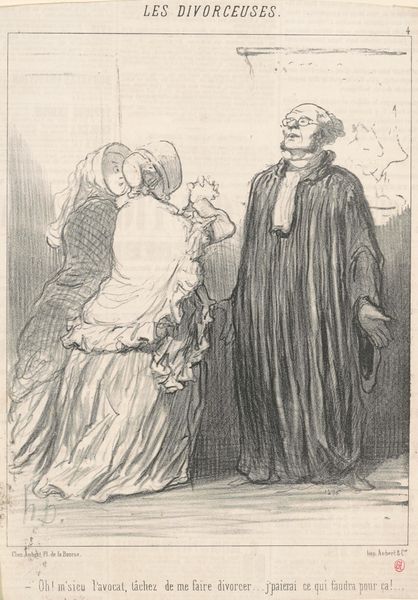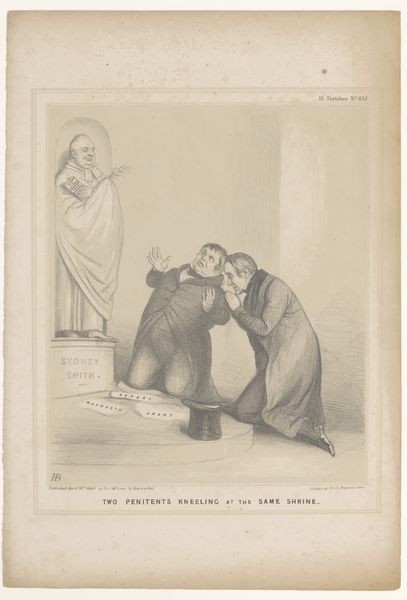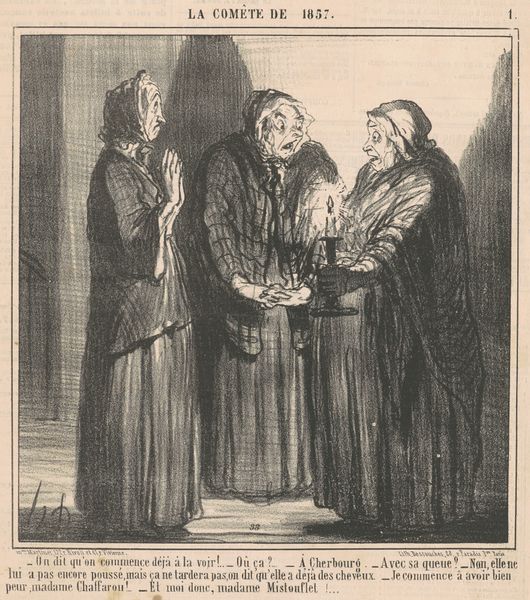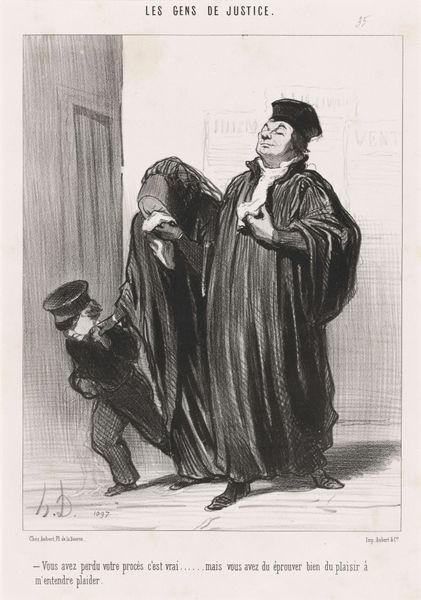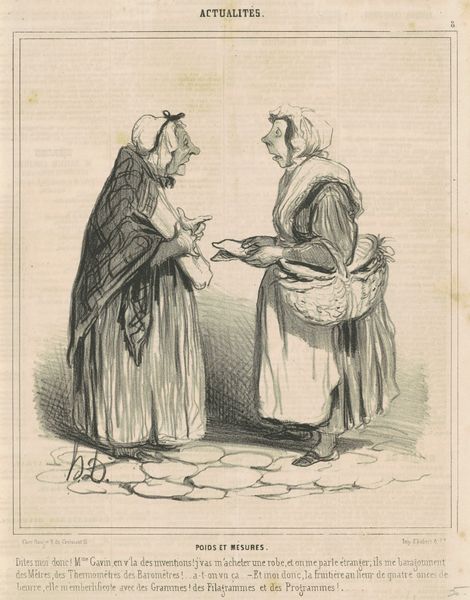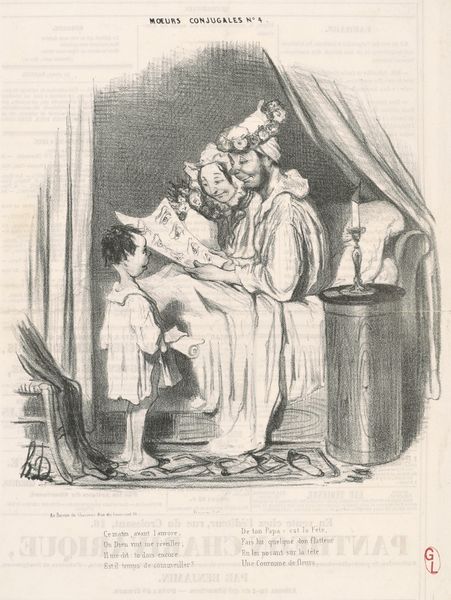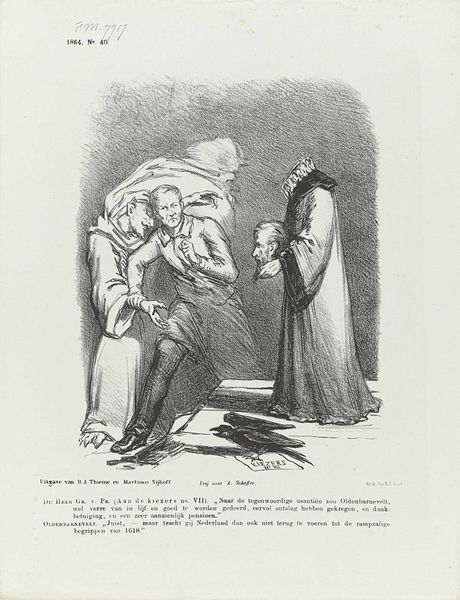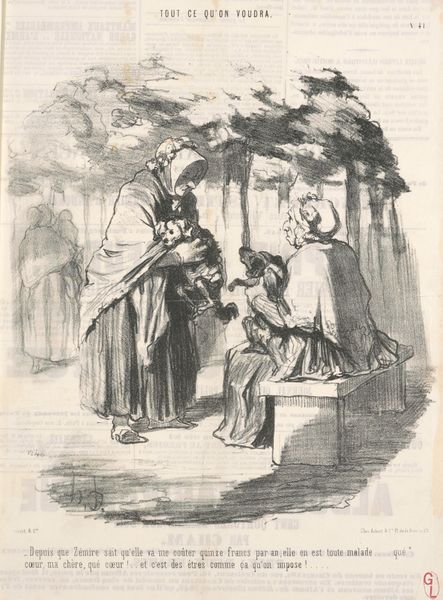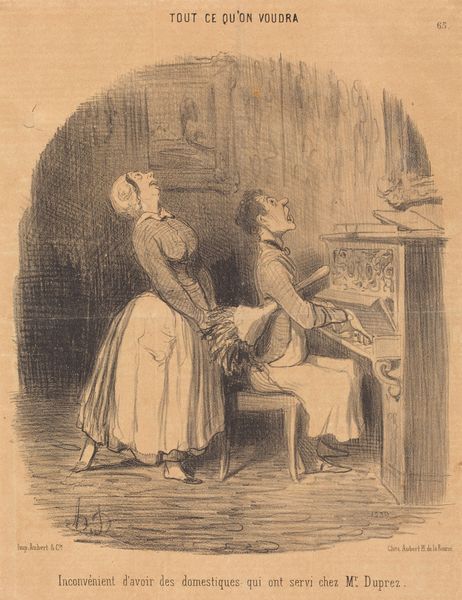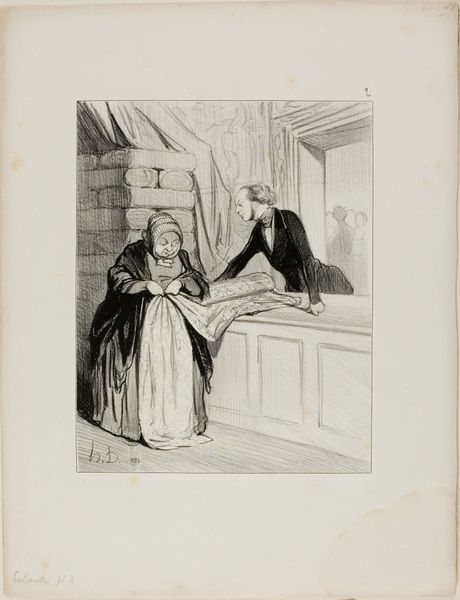
Dis donc amour! Crois-tu que ce sera un garçon. -Tu sais bien Clothilde que je te l'ai promis . . . Et j'ai un tact . . . Qui ne me trompe jamais! 16 - 1839
0:00
0:00
lithograph, print
#
pencil drawn
#
16_19th-century
#
lithograph
# print
#
caricature
#
pencil sketch
#
figuration
#
19th century
#
genre-painting
Copyright: National Gallery of Art: CC0 1.0
Editor: This lithograph, "Dis donc amour! Crois-tu que ce sera un garçon. -Tu sais bien Clothilde que je te l'ai promis . . . Et j'ai un tact . . . Qui ne me trompe jamais!", created by Honoré Daumier in 1839, strikes me as a rather sardonic commentary on domestic life. The figures seem almost grotesque in their exaggeration. What aspects of the composition stand out to you? Curator: Certainly. If we examine the formal elements, the stark contrast between light and shadow, achieved through Daumier's skillful use of line, immediately grabs our attention. Notice how the density of hatching defines the figures’ volumes, particularly in the woman’s voluminous dress and the man’s slumped posture. Does this contrast, this interplay of darkness and light, suggest anything to you? Editor: Perhaps it underscores the unequal power dynamic? The woman is largely in shadow, more subdued, while the man, though slouching, is bathed in light. Curator: Precisely. And observe the deliberate distortion of their features. Daumier employs caricature to amplify certain characteristics, twisting conventional notions of beauty and refinement. What effect does this have on the viewer? Editor: It's unsettling, but also revealing. By exaggerating their features, Daumier seems to expose something hidden beneath the surface. It certainly moves past straightforward portraiture into a psychological reading. Curator: Indeed. He moves beyond mere representation to critique the social conventions and hidden realities within marriage. Note too the minimal background, the sketchy wallpaper which draws the eye directly to the figures themselves and their interplay. So, in essence, Daumier uses formal techniques—light, line, distortion—to create a commentary on the illusion and perhaps disillusionment, inherent in conjugal expectations. Editor: That’s fascinating. I initially saw it just as a funny, slightly mean-spirited drawing. Now, thinking about the light, the exaggerated forms, I see how meticulously Daumier constructed a critique within the work itself. Curator: Exactly. It reminds us that the aesthetic choices artists make are not arbitrary but contribute significantly to a work’s meaning.
Comments
No comments
Be the first to comment and join the conversation on the ultimate creative platform.
